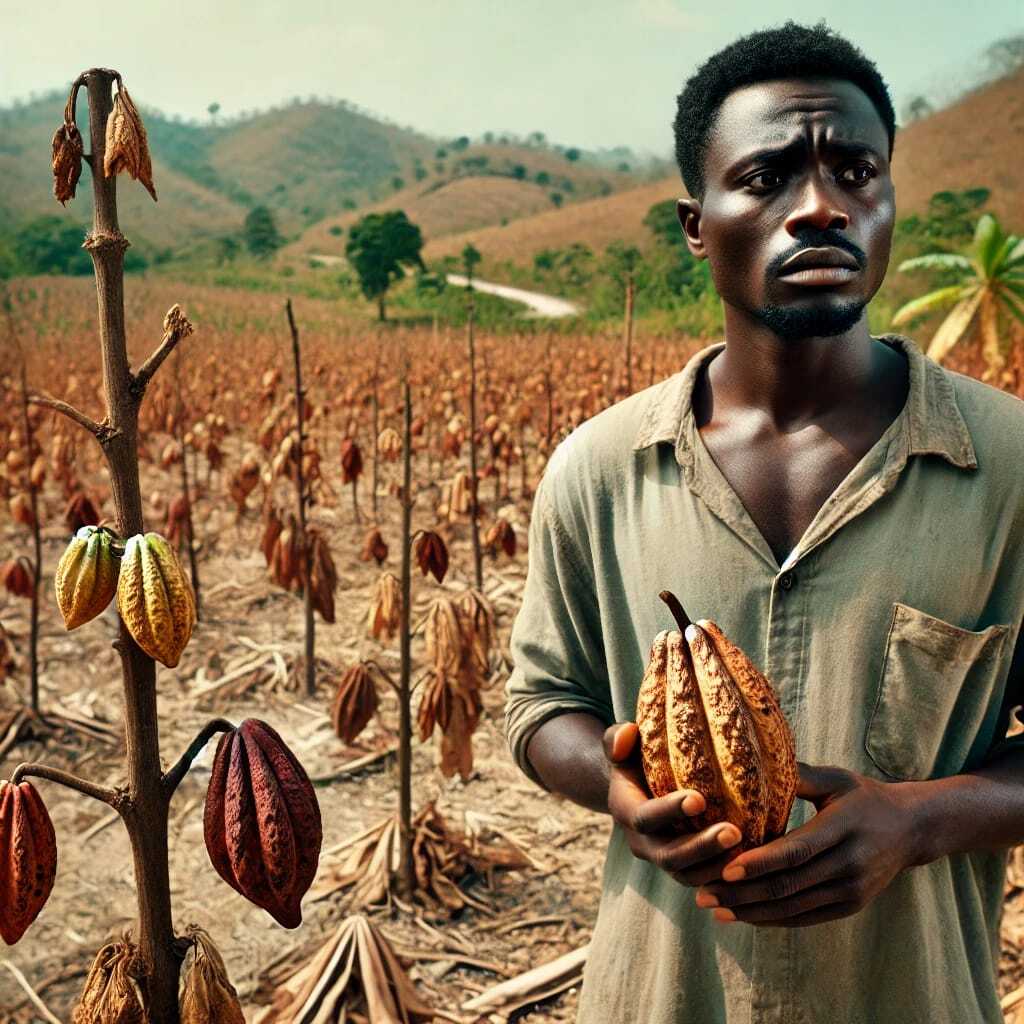#WestAfricaCocoa #CocoaPrices Climate Change Threatens Cocoa Farming in West Africa: Farmers Yet to Benefit from Rising Prices
Today, March 25, 2025, the cocoa industry in West Africa faces mounting challenges from climate change and price volatility. Despite rising global cocoa prices, farmers in Ghana and Ivory Coast, the top producers, have yet to experience significant financial benefits. Studies predict that by 2050, up to 50% of the current cocoa-growing regions in Ivory Coast could become unsuitable due to climate change, while Ghana is also expected to face moderate losses in arable land. Meanwhile, efforts to ensure sustainable practices and reduce deforestation are underway, with the United Nations Development Programme (UNDP) collaborating with both countries to improve cocoa traceability systems.
Detailed Analysis:
- Climate Change Impact:
- Rising temperatures and erratic rainfall threaten the cocoa sector in Ghana and Ivory Coast, where over 50% of the world’s cocoa is grown.
- Studies indicate that Ivory Coast may lose up to 50% of its current cocoa-growing areas by 2050, while Ghana faces a moderate decline.
- Price Volatility and Farmer Struggles:
- Global cocoa prices have surged to record highs, yet many farmers have not reaped the benefits due to supply chain complexities.
- The growing chocolate market, expected to reach $145 billion by 2030, has not translated into better earnings for local farmers.
- Sustainability and Traceability Efforts:
- Deforestation remains a significant concern, with 70% of illegal deforestation linked to cocoa farming.
- New EU regulations on deforestation-free products compel West African farmers to improve yield on existing plots instead of expanding through deforestation.
- Production and Supply Challenges:
- The International Cocoa Association (ICCO) estimates a record global cocoa deficit of 478,000 MT in 2023/24, the largest in over 60 years.
- Farmers are considering switching to alternative crops like rubber and oil palm, posing a threat to the future of cocoa production.
The future of cocoa farming in West Africa hinges on addressing climate risks, improving farm-level profitability, and enforcing sustainable practices to protect the region’s forests.
